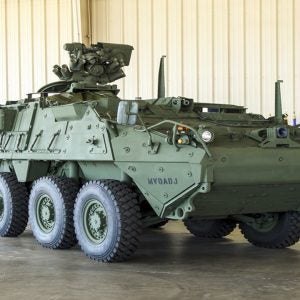Curtiss-Wright Spotlights COTS-based VICTORY Services and Mounted A-PNT Solutions at GVSETS 2018
Curtiss-Wright’s Defense Solutions division announced that it will have a strong presence in support of the 10th Annual Ground Vehicle Systems Engineering and Technology Symposium (GVSETS). In addition to featuring its rugged Commercial-off-the-shelf (COTS) technology for critical ground capabilities – ranging from in-vehicle networking, mission computing, and fire control processors to complete turret drive stabilisation and ammunition handling systems – Curtiss-Wright will also present a new technical paper on ‘Next-Generation Open-Standard Vehicle Electronics Architecture.’
The paper will be presented by co-author, David Jedynak, Chief Technology Officer and Director, Curtiss-Wright Assured Position, Navigation and Timing (A-PNT) Programme Office. The presentation will be featured in the Vehicle Electronics and Architecture & Ground Systems Cyber Engineering Technical Session, which is co-chaired by Mr Jedynak, and Daniel Newport, Supervisor, Ground Systems Cyber Engineering, US Army TARDEC, on Thursday 9 August. The session begins at 9am, and Curtiss-Wright’s presentation is scheduled for 10am.
“We are proud to participate in the 10th anniversary of GVSETS, by exhibiting our COTS solutions, presenting a technical paper and co-chairing a session, to share our industry-leading efforts in delivering COTS-based solutions for ground vehicles that reduce time, complexity, and cost to integrate the software and hardware elements required by the warfighter to effectively conduct NAVWAR,” said Lynn Bamford, Senior Vice President and General Manager, Defense Solutions division.
At GVSETS 2018, Curtiss-Wright (Booth #224) will highlight its solutions for ground vehicles that require VICTORY services and mounted A-PNT capabilities. Designed for ground vehicles operating in Global Positioning System (GPS)/Global Navigation Satellite System (GNSS)-denied environments, these products include:
- DBH-670 (A) Digital Beachhead: This enhanced version of the proven DBH-670 GbE switch adds a fully integrated GB-GRAM (Ground-based GPS Receiver Application Module), Chip Scale Atomic Clock (CSAC) and Inertial Measurement Unit (IMU) to the earlier model’s built-in infrastructure switch and shared processor unit features. Curtiss-Wright’s Digital Beachhead line of products is available with pre-integrated VICTORY software, providing VICTORY Data Bus and Platform services.
- DBH-672A Digital Beachhead: This enhanced version of the DBH-672 integrates our A-PNT kit to the rugged COTS single box solution, which includes a quad-core vetronics processor in a MIL-STD qualified, small form-factor chassis. The multifunction DBH-672 builds on Curtiss-Wright’s market leadership in VICTORY solutions.
- VPX3-673 A-PNT 3U VPX Single Board Computer (SBC): The VPX3-673 A-PNT card will speed and ease the integration of Complementary PNT sources on ground vehicles, with the integration of a GB-GRAM and an on-board IMU. This innovative size, weight and power (SWaP)-optimised module will eliminate the need for multiple in-platform LRUs or the use of ‘bolt-on’ technologies in order to field new Navigation Warfare (NAVWAR) capabilities.
Curtiss-Wright’s A-PNT solutions are designed to provide ground vehicles with access to trusted PNT information while operating in conditions with limited, impeded, or denied GPS/GNSS. Based on open architecture and COTS technology, Curtiss-Wright’s 3U OpenVPX module and fully integrated rugged LRU A-PNT solutions are cost effective, simple to configure, and rapidly deployable. Additionally, these A-PNT products are SWaP-optimised for both combat and tactical wheeled vehicle platforms to ease the integration of software and hardware elements required by the warfighter to effectively conduct operations in a GPS/GNSS-denied environment.
By distributing the best available PNT data simultaneously to multiple platform applications that require GPS/GNSS data, Curtiss-Wright A-PNT solutions eliminate the need for a ground vehicle to support multiple GPS/GNSS receivers or antennas. Curtiss-Wright’s A-PNT solutions meet legacy GPS/GNSS distribution requirements and are compatible with standard DAGR accessories, such as RA-1/RA-2 antennas, Crypto Variable Fill cables, and all serial interface cables. They are designed to support both legacy and future technology, including interfacing to mission equipment, as well as Anti-Jam Antenna and tactical communications.







